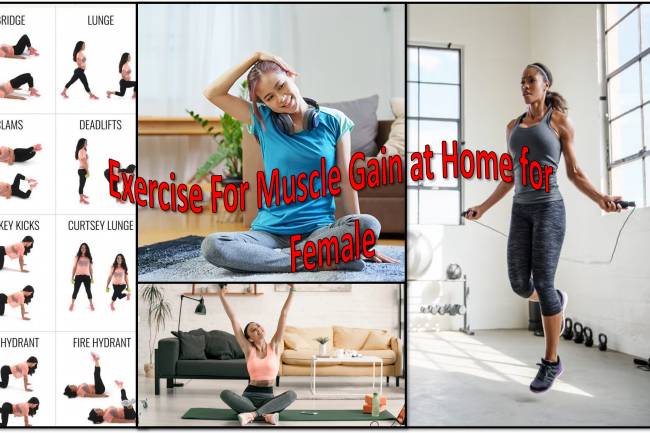
Detailed information about "Breather". Breathing Types and Benefits
Detailed information about "Breather".
Breathwork refers to a variety of techniques that involve consciously controlling breathing to affect physical, mental, and emotional well-being. By practicing specific breathing exercises, people can increase their physical well-being, reduce stress, improve emotional regulation, and even take advantage of altered states of consciousness. Breathwork methods have their roots in ancient traditions, but today they have been modernized for various therapeutic and wellness uses.
Contents
1. Diaphragmatic Breathing (Abdominal Breathing): 1
2. Pranayama (yogic breathing): 1
5. Box Breathing (Square Breathing): 2
6. Regenerative Breathing Function: 2
7. Buteyko Breathing Method: 2
2. Mental and Emotional Health: 2
3. Spiritual and Energetic Health: 3
How does breathing affect the body?. 3
2. Oxygen and carbon dioxide balance: 3
Scientific Backing for Respiratory Function. 3
How to Get Started with Breathwork. 4
When is the best time to do breathing exercises?. 4
1. Morning (for energy and focus) 4
2. Before bed (for relaxation and better sleep) 4
3. Afternoon (for stress relief) 4
4. During physical activity (for endurance and performance) 5
5. During meditation or yoga (for mental and emotional balance) 5
6. Throughout the day (for continued relaxation and focus) 5
Types of Breathwork.
1. Diaphragmatic Breathing (Abdominal Breathing):
- Description: Focuses on deep breathing using the diaphragm rather than breathing into the lower chest.
- Benefits: Reduces stress, increases lung capacity, improves oxygen delivery, and promotes relaxation.
- How it works: Inhale deeply through the nose, expanding the abdomen (not the chest), then exhale slowly.
2. Pranayama (yogic breathing):
- Description: A series of ancient yogic breath control techniques designed to regulate life force energy (prana).
- Popular techniques:
- Nadi Shodhana (Alternate Nostril Breathing): Involves breathing alternately between the nostrils, balancing the body and mind.
- Kapalabhati (Scalp Radiating Breath): Passive exhalation followed by rapid, forceful exhalations to clear the mind and energize the body.
- Bhastrika (Bellows Breath): Forceful breathing to stimulate and cleanse the lungs.
- Benefits: Increases concentration, reduces anxiety, balances energy, and improves respiratory function.
3. Holotropic Breathwork:
- Description: Developed by Stanislav Grof, this is a therapeutic breathing technique often used to access altered states of consciousness. It involves breathing deeply and rapidly for long periods of time.
- Benefits: It can facilitate emotional healing, relieve trauma, and create a sense of spiritual connection.
- How it works: Practitioners breathe rapidly and deeply while lying down, often accompanied by music, to access unusual states of consciousness.
4. Wim Hoff Method:
- Description: Created by Wim Hof, it combines breath control, cold exposure, and meditation. The breathing aspect involves controlled hyperventilation followed by breath retention.
- Benefits: Increases energy, reduces inflammation, improves concentration, strengthens the immune system, and increases physical endurance.
- How it works: The procedure involves 30 to 40 deep breaths (inhaling through the nose or mouth, exhaling through the mouth) followed by holding the breath, which is held for as long as possible.
5. Box Breathing (Square Breathing):
- Description: A simple technique used to increase focus and calm, often practiced by athletes, military personnel, and people in high-stress jobs.
- How it works: Inhale for 4 seconds, hold for 4 seconds, exhale for 4 seconds, exhale for 4 seconds, and repeat.
- Benefits: Reduces anxiety, improves mental clarity, and creates a calm state of alertness.
6. Regenerative Breathing Function:
- Description: A linked conscious breathing technique intended to release unresolved past emotions and trauma.
- How it works: Practitioners perform continuous circular breathing with no pauses between inhalation and exhalation.
- Benefits: Aids emotional release, promotes self-awareness, and promotes healing of past trauma.
7. Buteyko Breathing Method:
- Description: Technique focused on nasal breathing and reducing hyperventilation, often used to improve conditions such as asthma.
- How it works: Involves shallow breathing exercises and prolonged breath retention to improve carbon dioxide tolerance and respiratory efficiency.
- Benefits: Reduces respiratory complaints, improves oxygen uptake, and reduces shortness of breath.
Benefits of Breathwork
1. Physical Health:
- Improved Respiratory Function: Breathing exercises help increase lung capacity, oxygen delivery, and overall respiratory efficiency.
- Lower Blood Pressure: Conscious breathing reduces heart rate and blood pressure, promoting cardiovascular health.
- Improved Immune Function: Techniques such as the Wim Hof Method can strengthen the immune system, helping the body fight off disease.
- Pain Management: Breath control can reduce the sensation of pain and promote faster recovery from physical discomfort.
2. Mental and Emotional Health:
- Stress Reduction: Breathwork stimulates the parasympathetic nervous system (relaxation and digestion mode), helping to reduce cortisol levels and reduce stress.
- Anxiety Relief: Deep, controlled breathing can help calm the mind and relieve anxiety symptoms.
- Emotional Release: Techniques such as Holotropic and Rebirthing Breathwork facilitate the release of deep-rooted emotions and traumas.
- Better Focus and Clarity: Breathwork increases focus, attention, and mental clarity by promoting oxygen flow to the brain.
3. Spiritual and Energetic Health:
- Altered States of Consciousness – Breathwork can induce deep meditative and spiritual states, providing insights, healing, and feelings of connection.
- Energy Regulation – Breathwork helps balance life force energy (prana or qi), promotes vitality, and aligns the body, mind, and spirit.
- Mind-Body Connection – Regular breathing practice promotes deeper awareness of the body and its processes, leading to greater self-awareness and mindfulness.
How does breathing affect the body?
1. Nervous System:
- Respiratory function primarily affects the autonomic nervous system, which regulates involuntary functions such as heart rate and digestion.
- Activating the parasympathetic nervous system through slow, deep breathing promotes relaxation, while stimulating the sympathetic nervous system with rapid breathing can increase alertness and energy.
2. Oxygen and carbon dioxide balance:
- Breathing affects the balance of oxygen and carbon dioxide in the body. Techniques that involve holding your breath can increase tolerance to carbon dioxide, increasing the body's ability to use oxygen more efficiently.
- Excessive breathing (hyperventilation) reduces carbon dioxide levels, which can have both positive (invigorating) and negative (dizziness, malaise) effects, depending on the method used.
3. Circulatory system:
- Breathing increases blood circulation and oxygenation of the body's cells, which can increase energy levels, improve tissue repair, and increase overall vitality.
4. Hormonal response:
- Breathing can stimulate the release of endorphins, serotonin, and other feel-good hormones, improving mood and emotional well-being.
Scientific Backing for Respiratory Function
Although ancient breathing techniques have been used for centuries, modern science is just beginning to validate their benefits:
- Stress Reduction: Studies show that controlled breathing stimulates the vagus nerve, which helps regulate the nervous system and reduces stress.
- Improved Immune Function: Research on the Wim Hof Method shows that breathwork, combined with cold exposure, can lead to an increased immune response and decreased inflammation.
- Respiratory Efficiency: Breathing techniques like Boteco have been shown to improve respiratory conditions like asthma by teaching the body to breathe more efficiently.
How to Get Started with Breathwork
- Set an Intention: Decide if your goal is stress relief, physical health, emotional healing, or spiritual exploration.
- Choose a Technique: Depending on your goals, choose a breathing method (e.g., pranayama for relaxation, Wim Hof for energy, or holotropic for deep emotional work).
- Create a quiet space: Find a quiet and comfortable environment to do your breathing exercises without distractions.
- Start slowly: Begin with short sessions (5-10 minutes) and gradually increase the duration as you become more comfortable with the techniques.
- Listen to your body: Be aware of how your body reacts to different breathing methods, especially when experimenting with more intense methods like holotropic breathwork.
The result
“Breathing is a powerful practice that can improve physical, emotional and spiritual health.”
When is the best time to do breathing exercises?
The best time to do breathing exercises depends on your goals and daily routine. Here are some of the best times to exercise based on their specific benefits:
1. Morning (for energy and focus)
- Best for: Energizing the body, increasing alertness, and setting a calm, focused tone for the day.
- Exercises: Diaphragmatic breathing, pranayama (e.g., Bhastrika or Kapalabhati), Wim Hoff method.
- Why: Morning breathwork oxygenates the body, stimulates circulation, and clears the mind for a productive day.
2. Before bed (for relaxation and better sleep)
- Best for: Relaxing the body and mind, reducing stress, and improving sleep quality.
- Exercises: Box breathing, 4-7-8 breathing, alternate nostril breathing (Nadi Shodhana).
- Why: These techniques stimulate the parasympathetic nervous system, promoting relaxation and preparing the body for deep sleep.
3. Afternoon (for stress relief)
- Best for: Taking a mental break, reducing anxiety, and regaining focus.
- Exercises: Box breathing, deep abdominal breathing, mindful breathing.
- Why: An afternoon breathing session can reduce stress, lower cortisol levels, and restore focus during busy or stressful periods.
4. During physical activity (for endurance and performance)
- Best for: Improving endurance, increasing oxygen efficiency, and maintaining energy during exercise.
- Exercises: Rhythmic breathing, diaphragmatic breathing, rapid breathing.
- Why: Focusing on breathing during exercise increases performance, increases oxygen flow, and helps maintain endurance.
5. During meditation or yoga (for mental and emotional balance)
- Best for: Improving mindfulness, connecting with the present moment, and managing emotions.
- Exercises: Pranayama, alternate nostril breathing, deep abdominal breathing.
- Why: Breathing techniques combined with meditation or yoga deepen the mind-body connection and promote emotional stability.
6. Throughout the day (for continued relaxation and focus)
- Best for: Managing stress and anxiety when needed.
- Exercises: 4-7-8 breathing, conscious breathing, slow, deep breaths.
- Why: Incorporating short breathing exercises during times of stress can quickly calm the mind and bring clarity to difficult situations.
The result
Morning: For energy and focus.
Before bed: For relaxation and sleep.
Afternoon: For stress relief.
During exercise: For stamina and performance.
Anytime: For emotional balance and anxiety relief.
Practicing regularly during these times can maximize the benefits of your breathing exercises.



















